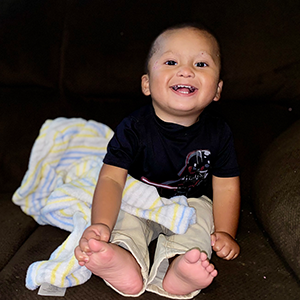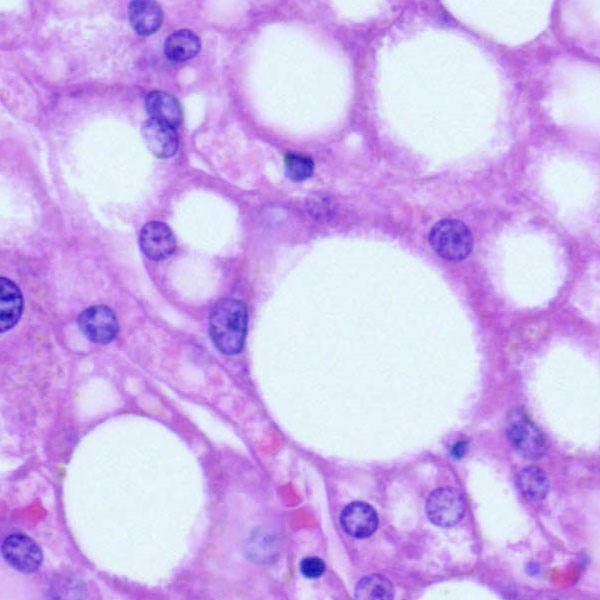-
Discovery’s Edge: First Cure With a New Drug
Mayo Clinic’s role in developing the first effective tuberculosis treatment
Patricia Thomas was trying to keep up her spirits. Her cough was not improving. Already thin, she was not gaining weight and the night sweats had returned. She tried to be optimistic, writing her boyfriend, Bob Stockdale, who was on a U.S. Navy destroyer in the Pacific fighting in World War II. She read his letters again and again. The nurses considered her the most spirited of their patients at Mineral Springs Sanitarium in Cannon Falls, Minn.
It is unclear whether Patsy, as she was called by family and friends, fully realized that she was dying, but her doctors did. It was 1944, and no effective treatment existed for tuberculosis.
About 45 miles away, in Rochester, Minn., however, two doctors at Mayo Clinic were about to make medical history.
Feldman and Hinshaw
William Feldman, D.V.M., born in Scotland and transplanted to Colorado, eventually landed at Mayo Clinic as a laboratory researcher. His fixation on tuberculosis began early. His mother had allowed TB patients to sleep on their large front porch, to take in the cold mountain air — thought to be curative for consumption, as TB was called in the 19th century. By the time Dr. Charles Mayo hired him in 1927, Dr. Feldman had had time to
think about those patients and the path of his scientific career.

Corwin Hinshaw, Ph.D., M.D., was at first a parasitologist, studying birds and other animals at the University of California. He then spent time at American University in Beirut, finally deciding to enroll in medical school so he could “understand the host as well as the parasite.” After a short two years in medical school he was aiming at a specialty in gastroenterology, but in 1933 was hired at Mayo Clinic in pulmonology and soon became an expert in pneumonia, then still a common killer. He also came into contact with his share of tuberculosis patients, referred to Mayo from surrounding sanitariums.
How Drs. Feldman and Hinshaw met is not recorded, but once they did, they joined forces against a common foe: tubercle bacilli.
Long history of tuberculosis
Few people today realize how deadly tuberculosis once was - and still is. TB, consumption, phthisis, scrofula, Pott's disease, and the White Plague are all terms used to refer to tuberculosis throughout history. Mummies from Egypt dating to 2400 BCE show tubercular decay in their spines. The list of people who have succumbed to tuberculosis includes such notables as Egyptian King Tut and American First Lady Eleanor Roosevelt, writers Jane Austen and George Orwell, religious leader John Calvin and South America liberator Simon Bolivar. Tuberculosis has killed 1 billion people around the world over the past two centuries.. In 2010, 8.8 million new cases were diagnosed, and over 1.2 million deaths occurred, most of them in developing countries.
Sanitariums like the one at Cannon Falls sprang up around the globe. Note the screens on the front windows allowing cold air into patient sleeping areas. Patricia Thomas went to Mineral Springs a few weeks after graduating from Austin High School.
Prior to 1950, however, the United States had its own TB epidemic. The country and other nations were dotted with sanitariums where those with the respiratory disease were sent, mainly to be isolated from the rest of the population. Fresh air, clean surroundings, and healthy food were all supposed to help. The idea was to bolster a patient’s immune system to naturally fight off the infection. Some did better than others, but no one knew why. For many it was months or years of upturns and declines as the bacilli slowly caused lung tissue to deteriorate, hindering breathing and making patients cough up blood. According to the Centers for Disease Control and Prevention, today, about 500 people die of TB in the United States annually. In contrast, from the 1920s into the ’40s deaths exceeded 70,000 a year.Sanitariums like the one at Cannon Falls sprang up around the globe. Note the screens on the front windows allowing cold air into patient sleeping areas. Patricia Thomas went to Mineral Springs a few weeks after graduating from Austin High School.Prior to 1950, however, the United States had its own TB epidemic. The country and other nations were dotted with sanitariums where those with the respiratory disease were sent, mainly to be isolated from the rest of the population. Fresh air, clean surroundings, and healthy food were all supposed to help. The idea was to bolster a patient’s immune system to naturally fight off the infection. Some did better than others, but no one knew why. For many it was months or years of upturns and declines as the bacilli slowly caused lung tissue to deteriorate, hindering breathing and making patients cough up blood. According to the Centers for Disease Control and Prevention, today, about 500 people die of TB in the United States annually. In contrast, from the 1920s into the ’40s deaths exceeded 70,000 a year.
The first experiment
That was the situation in which Drs. Feldman and Hinshaw began their work. Scouring the latest medical literature for possible paths to pursue, the two became interested in a drug called Promin, a sulfone compound that had been tested against a range of diseases by drug maker Parke, Davis & Company, but no one had tried it against TB. The Mayo researchers were prepared. They had determined that the guinea pig was an ideal model as it easily contracted the virulent strain of human TB and the disease
would take its course in a consistent fashion.

From May 1940 into the fall of the year, Promin was studied in the animals in Rochester. Early the following year, they reported in Proceedings of the Staff of Mayo Clinic the positive results. It was not anything close to curative, but there was significant modification of the disease. They had, in effect, bumped it off the “impossible mission” list. But according to Dr. Feldman, their peers, upon hearing their presentation at the American National Tuberculosis Association, were far from enthusiastic.
“Few in the audience believed what we said, many didn’t understand, and some were sure we were wasting our time in searching for an effective chemotherapeutic agent,” Dr. Hinshaw said in a later presentation.
The study provided two additional benefits. It signaled to others that this team in the Midwest had developed a good system for testing potential anti-TB compounds and it spurred the two of them to try a range of other formulas, including many pre-existing drugs that didn’t work for other diseases but might work on TB.
In July 1943, Dr. Feldman wrote Selman Waksman, a Ph.D. scientist at Rutgers University to ask about drugs he was working on that they might test. The pair had been following his published papers on natural compounds that had anti-bacterial properties. He also asked if he could visit Waksman’s lab in New Jersey. After some delay, Dr. Waksman extended an invitation and in a very cold November, Dr. Feldman made the long train trip to the East Coast.
At this time the Waksman lab was working on a drug that had been isolated from microbes in the soil. His lab assistant, Albert Schatz, was working long hours extracting the compound from solution in the basement of the lab building, often sleeping on the floor to ensure the process didn’t stop. While not immediately identified to Drs. Feldman and Hinshaw, this compound was streptomycin.
That November visit is shrouded in mystery. According to historian Julius Comroe, Jr., Dr. Feldman urged Dr. Waksman to include TB in any tests he would initially run on prospective antibacterial drugs, or antibiotics, as Dr. Waksman would label them. Dr. Feldman also asked him to make available any promising compounds so he and Hinshaw could conduct guinea pig trials.
At the time the doctors visited in New Jersey, the first paper on streptomycin might have already been in the works, perhaps even in the hands of journal editors. In January 1944, the paper was published, including some data of its effects on TB. There is no evidence, however, that the Mayo team even knew the drug existed.
Finally, in March, Dr. Waksman wrote Dr. Feldman asking if he would test streptomycin. A microbiologist and biochemist whose work was founded in plant and soil research, Dr. Waksman could do cellular testing, but had no way to conduct animal studies or human clinical trials. He needed the collaboration with Mayo Clinic for any rapid development of the drug.
Ten grams and the beginnings of a cure
Drs. Feldman and Hinshaw, however, were given little of the drug to work with; the granules in the one vial they received weighed ten grams, equal to the weight of two U.S. nickels. To maximize its use, they split the drug into multiple doses that would last from early April until late June for four guinea pigs with TB. The small doses provided relief, but did not cure the pigs. Still, this initial test achieved its goal: to show the drug was not overly toxic, unlike an earlier compound, actinomycin.
During this period, Dr. Waksman was in talks with Merck & Company, the New Jersey pharmaceutical firm. At a meeting of the Mayo and Rutgers scientists in July, they tried to persuade Merck officials to produce enough streptomycin to supply the Mayo team. In the end, according to author Peter Pringle, it was CEO George Merck himself who consented to the plan as part of the war effort.
Now, the Mayo team could begin serious tests.

Drs. Feldman and Hinshaw had gambled that they would obtain more of the drug and had infected a number of guinea pigs with the TB virus before they left for New Jersey. When they returned to Minnesota, they were able to immediately repeat the toxicology trial and received the same results. When World War II left them with a shortage of technicians, the two doctors maintained the dosing themselves, administering the drug every six hours for 61 consecutive days.
In August, they began a large trial of 25 guinea pigs infected with TB with 24 control animals. After 215 days they presented the findings to their peers: the staff of physicians and researchers at Mayo Clinic, probably in the 15th floor assembly room of the Plummer Building. It was two days after Christmas, 1944. They repeated the study in the following months and published their paper in the American Review of Tuberculosis.
Was streptomycin effective against tuberculosis? Almost in answer to their previous critics, Feldman and Hinshaw drew a very clear picture, literally:
Nothing to lose: The Patricia Thomas story
Dr. Karl Pfeutze knew he could do no more for Patsy Thomas. In October 1944, her right lung had worsened and a Mayo surgeon removed some ribs to try to limit the disease. Then X-rays showed deterioration in her left lung. Dr. Pfeutze told Patsy he was permanently transferring her to Rochester and into the care of Dr. Hinshaw at Mayo Clinic.
Dr. Hinshaw concurred with Dr. Pfeutze that the young woman was dying. It was clear that streptomycin was her only chance. The final animal tests weren’t complete, but the data were sufficient. The doctors were confident an experimental treatment was reasonable. Patsy told Dr. Hinshaw to go ahead with the injections.
(Clockwise from upper left) Patricia Thomas, high school senior; Bob Stockdale visits Patricia while on leave from the Navy; the engagement photo; the family she hoped for - Debra, Steven, and Kathy; Bob Stockdale in uniform.
Consenting to what today would be called a “first in human study” appears a simple choice for someone with nothing to lose. Yet, it takes courage to undergo what may be stressful or painful treatments, knowing that one’s life may be extended only briefly, if at all. Often patients agree to participate — in their words — “so it may help others.” Those who take part in research studies play as important a role as the scientists and physicians.
In November 1944, Patsy began her treatments. Dr. Hinshaw had to estimate the dosages, extrapolating from the animal trials and perhaps from two earlier patients. An elderly man may have received some injections at Colonial Hospital in Rochester, but his condition was far worse. He died after a few days. A second man, with blood-borne TB, was treated “for two or three months,” according to Dr. Frank Ryan’s history, The Forgotten Plague. That patient showed some improvement, but died of an unrelated blood clot.
Patsy Thomas was the first human to receive a full schedule of streptomycin to treat her TB. In all, she received five courses of the drug with multiple doses over five months, each carefully administered, monitored and adjusted, based on observations and X-rays. By April 1945, the disease had receded to the point that surgeons were able to remove the small portion of a lung still infected, leaving Patsy Thomas clear of the deadly disease.
Outcomes
Streptomycin was only the start, but it was the beginning of the end of a terrible disease that few people even remember today.
In December 1948, Dr. Feldman wrote to Dr. Waksman, with whom he had developed a constant exchange of letters, phone calls and telegrams over the years, to say he was going to be leaving Rochester shortly for a stay in the woods of northern Minnesota. He had just completed his own course of treatment for tuberculosis. He had contracted the disease either from a patient or from his own testing, but he was under the able care of a quite competent Mayo specialist named Corwin Hinshaw. He had received what would be the standard treatment from then on — streptomycin and PAS (para-aminosalicylic acid). He was back at Mayo a year later, his life saved by the drug he helped develop and by his colleague and friend.
Dr. Selman Waksman won the Nobel Prize in Physiology or Medicine in 1952. Drs. Feldman and Hinshaw ended up celebrating by having a drink under the shade tree in the Feldmans’ backyard.
And on October 8, 1947, Patricia Thomas became Patricia Stockdale, marrying her sweetheart, Bob, after he left the Navy. Patsy’s daughter, Debra Stockdale Prihoda, says her mother never knew the full significance of her treatment or her involvement in the story of tuberculosis. She said her mother had no idea her name was in the medical history books or that she contributed to someone winning the Nobel Prize. Patsy might not have known that she was the first person successfully cured of TB with the new drug. She was grateful and happy to be able to marry and have a family.
Though her spirit never lagged, her condition weakened over the years and her overall health was never robust. Patsy died on June 10, 1966, at the age of 42. Now, after seven decades we can finally give Mayo Clinic patient Patricia Thomas Stockdale full credit for her historic contribution in the fight against tuberculosis.
Published Sept. 2015
Related Articles









